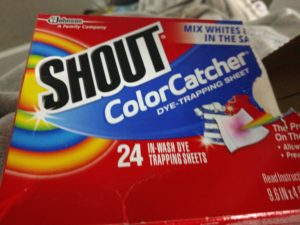I first sewed on a sewing machine, like many folks, in middle school. We had a project to make a pair of shorts. The machines were setup for us, and we had the practice sheets for learning how to work the machine and control the speed, and then cut out the shorts and sewed them. My shorts came out very small, I nearly ran over my fingers several times, and I just wasn’t impressed with sewing at all at that point.
Over the course of the next 15 or 20 years, I would try sewing one different

machines 3 more times. Every time the machine would be out of my control, or I would have a project turn out so horribly. So I gave up. I was petrified of sewing, never even wanted to pick up a needle. At reenactments, friends would be sewing their gowns, or handkerchiefs or the like, and I would act like a vampire seeing sunlight when they offered to let me try.
Then my aunt taught me how to quilt. And one day, I decided I should try piecing. So up to the local used furniture store, to look for a used sewing machine. Suprisingly, there was a gorgeous Singer in a cabinet for 35 dollars. What a steal! I verified it worked, and took it home. Thus began my love of machines.
What caused the change? Well for one, I’m sure it was age and patience for me personally. I wanted everything done quickly, and as most sewists know, there’s nothing quick about any sewing. However, comparing my used Singer to a modern machine a friend had given to me (a Husqvarna Viking), I also learned that I much preferred the feel of the vintage sewing machine’s operation. But why?

I think that one of the big draws for me is that they are all metal. Modern machines are primarily made of plastic gears and pieces, to allow for quick and low cost assembly. Even though you may be paying out the nose for a state of the art machine- you’re paying for the computer within the machine, not the machine itself. Metal machines are just simple. All the mechanisms that are in its operation are easy to understand and maintain.
The feed dogs and presser feet on metal machines, I believe control things much better than the modern machines. I can feel the machine actually gripping the fabric and moving it. But also I have to pay more attention to it to make sure its straight. As a bit of a control freak, I don’t mind that though.
I’m also not as afraid of breaking a vintage machine as I am a modern one. Perhaps is because of their metal makeup, but I know its much more difficult to break these machines than it would be a plastic one. I keep pins in when I sew, I put fabric that’s too thick for the needle in the machine sometimes, and lets not talk about how many needles I’ve broken, pushing the fabric through too fast. However I’ve never worried about breaking the machine in the process. But the plastic machines I’ve worked with, or on, I’m always so tentative and nervous that I’m going to snap a gear if I work it too much, or the little lever that changes the stitch length is going to fall apart.

Finally, and this is mostly the sentimental side of me here, these machines were used for years by people generations before me that learned to sew on these, or whose children learned to sew on these. They were used for quilts, clothing, tablecloths, linens, and so much more. Its continuing their legacy by using these machines for my projects, both traditional and non traditional. So in some ways I feel as if their hands are guiding mine in my lessons on what to do/what not to do with these beauties. In the future I hope that others will see the value in these vintage and antique pieces as well for their own sewing, and as I teach more people about sewing, perhaps they too will grab a legacy piece of their own.
And that last piece is why I have over 70 in my collection. To pass on to future generations who wish to learn to sew.
But also because they’re all beautiful.




